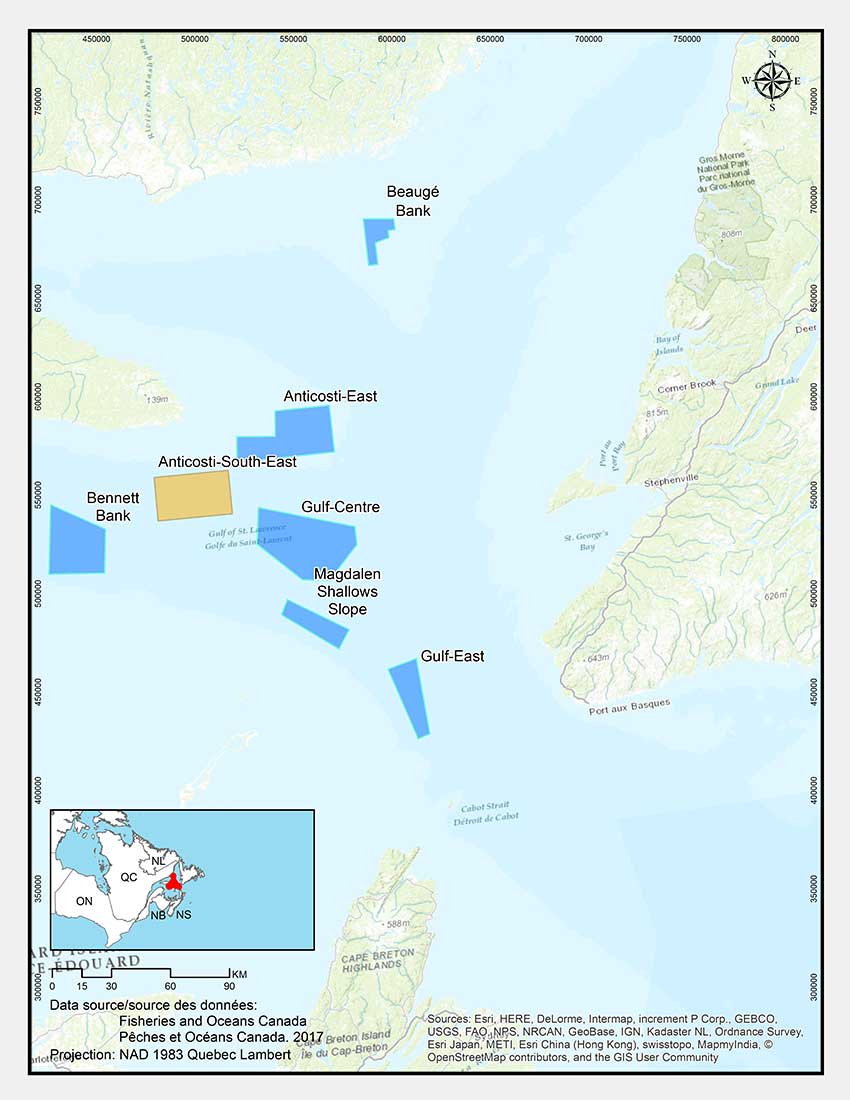South-East of Anticosti Island Sponge Conservation Area
- Location
- Estuary and Gulf of St. Lawrence Bioregion (Quebec, New Brunswick, Nova Scotia, Prince Edward Island, Newfoundland and Labrador)
- Approximate Size (km2) contribution to Marine Conservation Targets
- 845 km2
- Approximate % coverage contribution to Marine Conservation Targets
- 0.01%
- Conservation Objective
- Cold-water sponge protection
Ecological Components of Interest
Species of regional importance: cold-water sponges
- Why they are important: Cold-water sponges are fragile, slow to recover, structure-providing species.
Habitat that is important to biodiversity conservation: cold-water sponges
- Why they are important: This conservation area features a high concentration of sponges (Porifera spp.), some of which create structures that provide diverse habitat for many other species.
Prohibitions
The ecological components of interest are effectively conserved through the following prohibitions:
All fishing that uses bottom-contact gear, such as bottom trawls, dredges, bottom seining, traps, gillnets, and bottom longlines.
Other Considerations
No human activities that are incompatible with the conservation of the ecological components of interest may occur or be foreseeable within the area.
Environmental Context
This conservation area includes a community of sponges classified as a significant benthic area (CSAS SAR - 2017/007) in the Estuary and Gulf of St. Lawrence bioregion. This area also includes other biologically important features, such as high concentrations of Duva florida soft corals and Anthoptilum grandiflorum sea pens. In addition, the area harbours the large structure-providing Asconema foliatum sponge, and at least three species of rays and wolffish.
High concentrations of sponges and corals create habitat with complex structures that provide refuge, feeding, and rearing areas for many marine species, thus supporting greater biodiversity.
Prohibiting bottom-contact fishing gear makes it possible to directly protect the fragile structure of corals and sponges, and can also help protect the fish and invertebrate species that rely on this habitat.
- Date modified:
